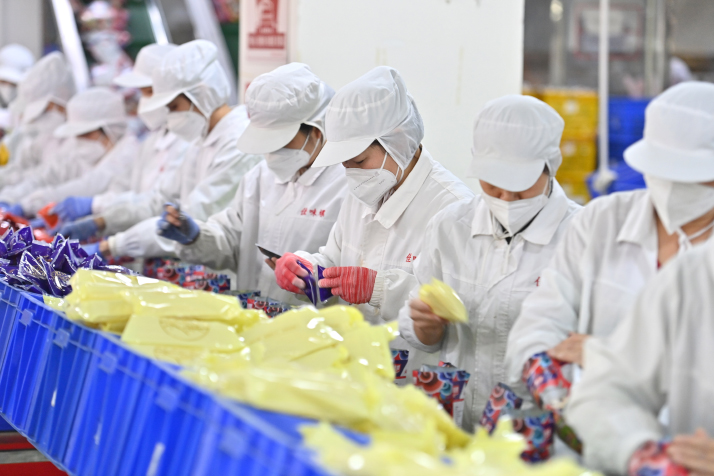| China |
| Local Two Sessions outline regional development roadmaps | |
|
|
 Tourists try their hand at surfing in Wanning, Hainan Province, on January 14 (XINHUA)
'Where there are lights, you will find merchants from China's Zhejiang Province; where there are no lights, you will still find Zhejiang merchants." This is how the province's residents describe its entrepreneurial soul. "I was born into a merchant family in Zhejiang. My parents became first-generation Zhejiang entrepreneurs after the launch of reform and opening up in 1978 and I am the second generation. The diligent and initiative spirit of the older generation have always inspired me and their entrepreneurship and patriotism are part of my DNA," Wu Jinhua, President of hi-tech intelligent equipment provider Zhejiang Wanfeng Technology Development Co. Ltd., said on January 11. Wu, a member of the Zhejiang Provincial Committee of the Chinese People's Political Consultative Conference (CPPCC), made the remarks during the committee's annual session from January 11 to 15. The CPPCC members, selected through consultation and recommendation, represent all levels of society. They put forward proposals centering on political and social issues to government bodies. Growing up in the 1990s, Wu represents the economic sector. And he had a lot on his plate this year. Roughly at the same time of the meeting of CPPCC members, the Zhejiang Provincial People's Congress also convened its annual session from January 12 to 16. In China, the provincial-level Two Sessions refer to the yearly gatherings, usually in January or February, of local people's congresses and CPPCC committees, where participants discuss regional economic and social development over the past year and draft plans for the 12 months ahead. Then, in March, deputies to the National People's Congress (NPC) and members of the CPPCC National Committee—China's top legislature and top political advisory body, respectively—meet for the highest-level Two Sessions. Economic roadmaps "This year is important for local authorities to implement the decisions and plans drafted at the 20th Communist Party of China National Congress [in October 2022]," Song Xiangqing, Vice President of the Academy of Government at Beijing Normal University, told Beijing Review. Plus, after China adjusted its COVID-19 policy in late 2022, dropping most restrictions on social and economic activities, the top leadership announced at the agenda-setting Central Economic Work Conference last December that the country would prioritize overall economic recovery and improvement in 2023. "As China has entered a new phase in its COVID-19 response, economic issues are key topics in the work reports of most local governments," Song said. "Many regions have seen relatively low growth rates over the past year. It's crucial for them to seize opportunities in 2023 to fully unleash their capabilities, speed up growth and improve the quality of development." Setting feasible targets will prove essential in motivating them to fulfill their established indicators, he added. Local economic roadmaps have unfolded across China. Provincial-level governments rolled out their economic plans based on their own circumstances and advantages during the local Two Sessions season. The plans required the endorsement of local people's congress deputies before they were put in place. While most local governments expect their GDP to grow by 4.5-6.5 percent in 2023, the southern island province of Hainan eclipsed others by setting its target growth rate at 9.5 percent. Tibet Autonomous Region was the runner-up, setting an 8-percent goal. "The Hainan Free Trade Port has yielded fruitful results in 2022," Feng Fei, Governor of Hainan, said while presenting his government work report to the provincial people's congress session on January 13. Its imports and exports of goods, trade in services and paid-in foreign investment all registered double-digit growth last year, according to the report. As China's largest special economic zone, largest free trade pilot zone and only free trade port, Hainan is expected to optimize its tariff policy, invite new investment and prioritize the expansion of consumption, with the goal of increasing tourist numbers and tourism revenue by 20 percent and 25 percent, respectively, the report further stated. Total grain output of northeastern province of Heilongjiang has ranked first in the country for 13 consecutive years. Apart from agriculture, Heilongjiang will emphasize the development of new growth drivers, the optimization of its business environment and the creation of a dynamic government-business relationship this year. The GDP of the southern province of Guangdong has topped the list for 34 consecutive years, hitting 12.8 trillion yuan ($1.9 trillion) in 2022. In 2023, the province will prioritize innovation in its hi-tech and manufacturing sectors. Furthermore, it intends to create more industrial clusters each with an annual output of more than 1 trillion yuan ($149.1 billion) by developing the biomedicine, health and ultra-high definition display equipment industries. Guangdong had established eight 1-trillion-yuan industrial clusters as of 2022, according to the provincial government. Guangxi Zhuang Autonomous Region, neighboring Guangdong, is projected to strengthen its light and specialty industries, including those of, for example, smart home appliances and luosifen, a local dish consisting of rice noodles boiled and served in a spicy broth, that has seen a boom in export numbers in recent years. In 2022, Inner Mongolia Autonomous Region in the north saw its outputs of milk, mutton, beef, cashmere and fodder crops take the top spot in the country; its fixed assets investment increased more than 15 percent, ranking first nationwide; and it was the largest source of trans-provincial coal and electricity supplies. In 2023, it will explore new projects in modern energy economy, modern agriculture as well as husbandry and infrastructure construction. The eastern province of Zhejiang proposed to focus on the real economy, emphasized high-end, intelligent and green development of manufacturing and regarded digital economy as its No.1 project of development.  Production staff package luosifen, a local dish that consists of rice noodles boiled and served in a spicy broth, at a workshop in Liuzhou, Guangxi Zhuang Autonomous Region, on January 5 (XINHUA)
Confidence is crucial It's worth mentioning that Zhejiang's government work report has taken the promotion of both a high-quality development of the private economy as well as that of the province's entrepreneurial spirit as the new tasks at hand, echoing Wu's proposal to shore up the confidence of Zhejiang's private enterprises. Before attending the CPPCC meeting, Wu had traveled to nine overseas cities to visit customers and conduct field research—that's how he discovered a "blue ocean." This entrepreneurship industry term created in 2005 refers to the vast "empty ocean" of market options and opportunities that occur when a new or unknown industry or innovation appears. "Electric vehicles (EVs) account for 30 percent of China's automobile market, while in the North American area they only take up a 5-percent market share. The proportion is expected to expand to 50 percent by 2030 in North America, which means millions of fuel vehicles will be replaced by EVs," Wu said excitedly—given his company produces EV parts and components. With these types of market and policy opportunities ahead, Zhejiang's 2023 outline has only confirmed the positive outlook of local business people like Wu. This entrepreneur for one is highly optimistic about the province's prospects for this year and as far as he's concerned "confidence is more precious than gold." (Print Edition Title: The Level Best) Copyedited by Elsbeth van Paridon Comments to zhangshsh@cicgamericas.com |
|
||||||||||||||||||||||||||||||
|
